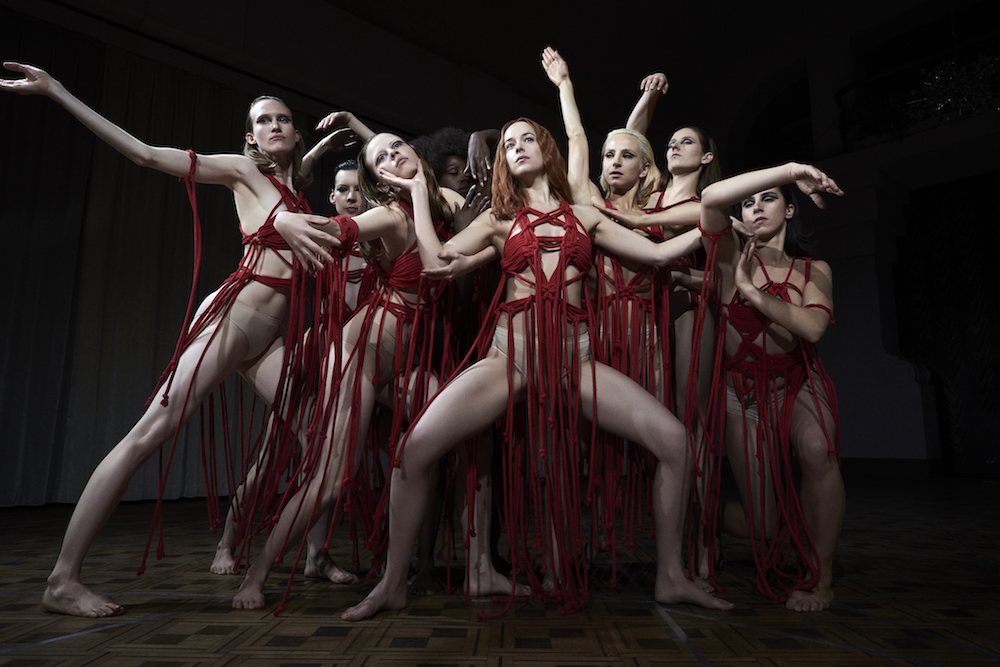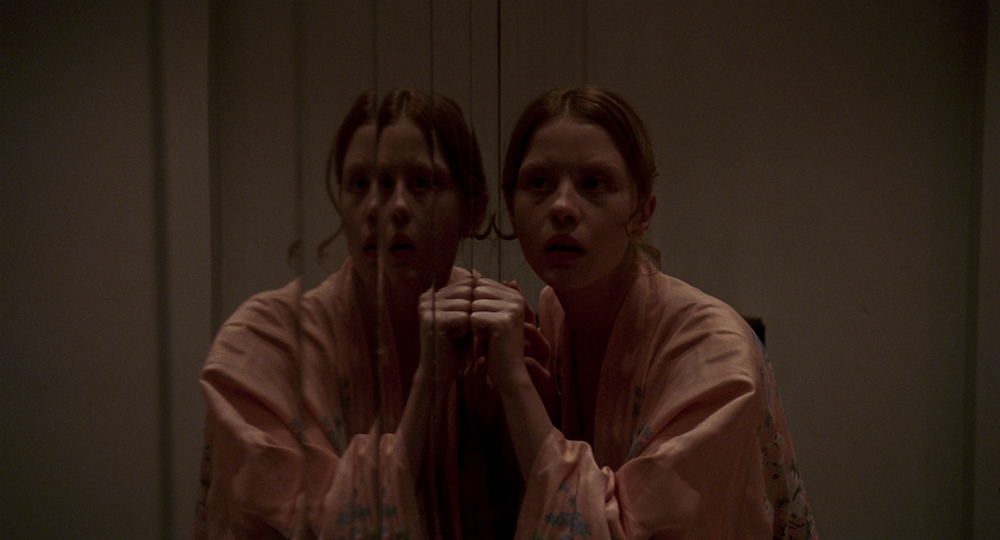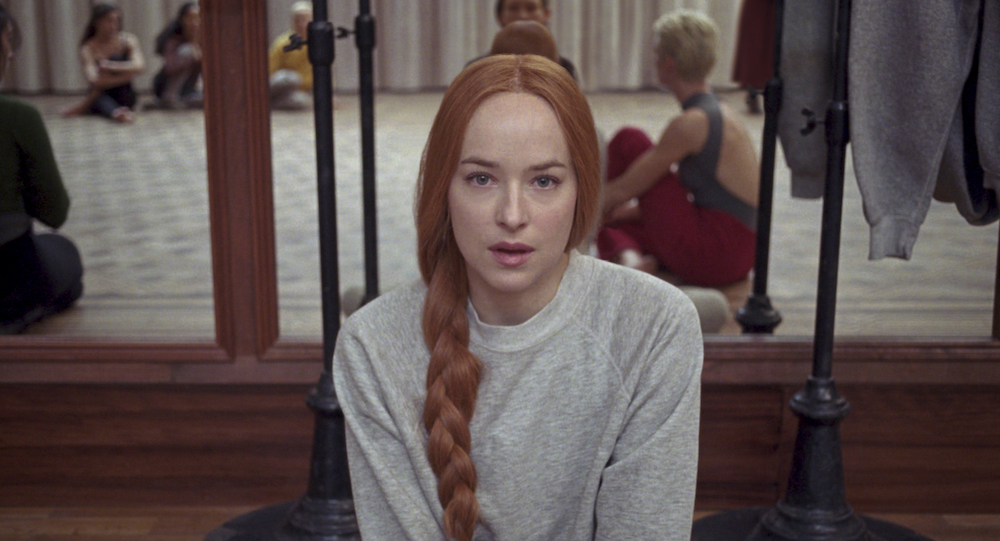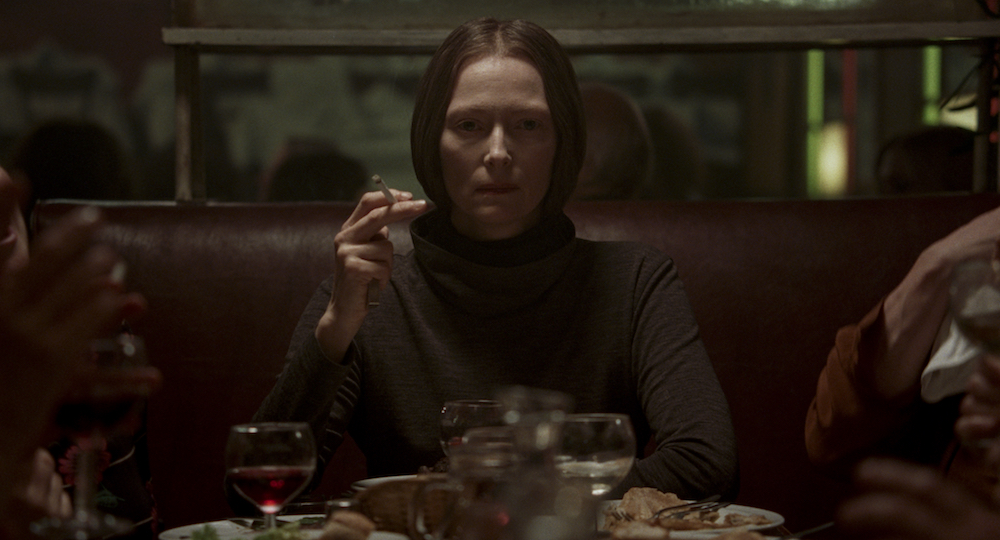Thea Hawlin discusses supernatural dance with choreographer Damien Jalet for the recent remake of cult horror film Suspiria

You wouldn’t guess it from his impressive CV, but Damien Jalet came relatively late to dance, “it always comes to one thing” he muses, “desire has to be stronger than fear”. From humble beginnings entertaining his grandmother in Belgium, Jalet would go on to first study theatre at Brussel’s National institute of Performing Arts before moving to New York to pursue modern dance. The vibrant contemporary scene became a springboard that saw him move from dancing to devising, working with everyone from L’Opera de Paris and Chunky Move, to Bjork and Marina Abramovic.
In 2013 Jalet devised a female trio dance called “Les Médusés” at the Louvre. In preparation for the piece he made his dancers watch Dario Argento’s 70s horror film Suspiria. It feels fated that when Luca Guadagnino was searching for a choreographer for his remake of the cult classic, it was this piece by Jalet that caught his eye. I sat down with the Belgian-French choreographer to discover how to transform movements from the mundane to the mystical.

Once you were on board with the project how did you begin? Did your ideas change and develop, or did you have a fixed concept from the start?
I got inspired by sacred geometry; the first thing I designed when I started rehearsals was this composition on different pentagrams and pentagons the company is dancing on in “Volk”. The sculptural positions of “les medusees” were really a very concrete starting point for everyone. I wanted a very centered, very grounded physicality. Most of the movements come from the belly, the womb or the thoracic cage – ‘suspiria’ is of course connected to the lungs. After three weeks we had a rough sketch of all the different choreographic parts, going from very structured to wild and distorted. Once the shooting started we kept on rehearsing and developing material, it was very intense.
Were there any specific choreographers or dancers you used as reference points?
David Kajganish, the scriptwriter, got inspired by pioneer avant garde female choreographers such as Martha Graham, Pina Bausch, Isadora Duncan, but I guess his biggest inspiration was Mary Wigman, who worked before, during and after WW2 in Germany; the reputation of her work got affected by the contact she had at one point with the third Reich even though she’s been a great influence on many important choreographers. But even though I placed choreographic quotes here and there, I really didn’t want to become stuck in the “historically right”, I wanted to stay close to my creative instincts and embody the ideas of the film. In a way I really tried to transmit the visceral energy of the original Suspiria in the film, something frenzied and primal. I also referred to some trance rituals I had witnessed in Indonesia. The first function and power of dance is often forgotten, people often think of dance as pretty, gracious and classical but I wanted to break that.

Thom Yorke produced music especially for Suspiria. Did you use his work?
Unfortunately, its more Thom who had to work with my material, as he joined the process quite late. I think “Volk” has been extremely challenging for him as the whole dance is scored in a really complex rhythmic polyphony (each dancer has to learn the 12 page score in order to perform it right, it’s a nonstop counting trip). He confessed he had many many discouraging attempts, and it took him six months to finally figure out. The dancers are counting on three and perform on pentagons, time is connected to three and space to five, once he started playing with these two numbers, “Volk” as you hear in the film appeared all at once. I was really impressed by what he created actually.
How long did it take to come to a final sequence? How did you know when it was finished?
The original piece “les medusees” was made in 9 days, but “Volk” as you see in the film took nearly three times more; the geometry and entwined connections between the dancers in a narrow space was a bit of a mindf***k. When you perform a work live, it is indeed in constant evolution, a piece sometimes really blossoms over time. With cinema the scary thing is that you mark the work in time with indelible ink. And it’s there for a while! But I have to say that as a choreographer, who can be sometimes frustrated about the ephemeral nature of our art, there was something comforting in the idea: to have at least one work being immortalised.

You’ve said before dance is about ‘capturing something that is not conscious’– how did those ideas inform the development of the piece?
When I work on choreography I can have a very clear departure point, but I never know how it’s going to look at the end. Somehow it always has to be an investigation, an exploration, and since it’s an intuitive process I guess something of your unconscious gets translated in the process. It’s also not a work I do alone, what you end up seeing is the meeting point of the hard work of a lot of people, all specialised in different fields. So it’s a bit of a collective unconscious in a way. There was one beautiful moment early in the preparation of the choreography, when I was working with Dakota Johnson. Somehow, I asked her to move from her skeleton more than her muscles. There are so many things in our body we can’t control consciously; you’re heartbeat to start with. I guess muscles are directly connected to consciousness. You use your muscles to operate an action, a decision. When you move from the skeleton something interesting happens. Somehow that’s the only thing that will remain from your body, so it reminds you of your own mortality. Dakota started to move her shoulder blades and because she is so loose, it moved in a pretty extreme way, nearly like an animal. She was completely unaware she could do that, and was nearly disturbed when she was watching herself on video. I felt it became pretty much a physical metaphor of her own unconscious powers. For this film in particular, surreal motions and animalistic or primitive energies seem to really come to the fore. Part of what makes the dance so magical is its ability to transcend so much without the use of words.